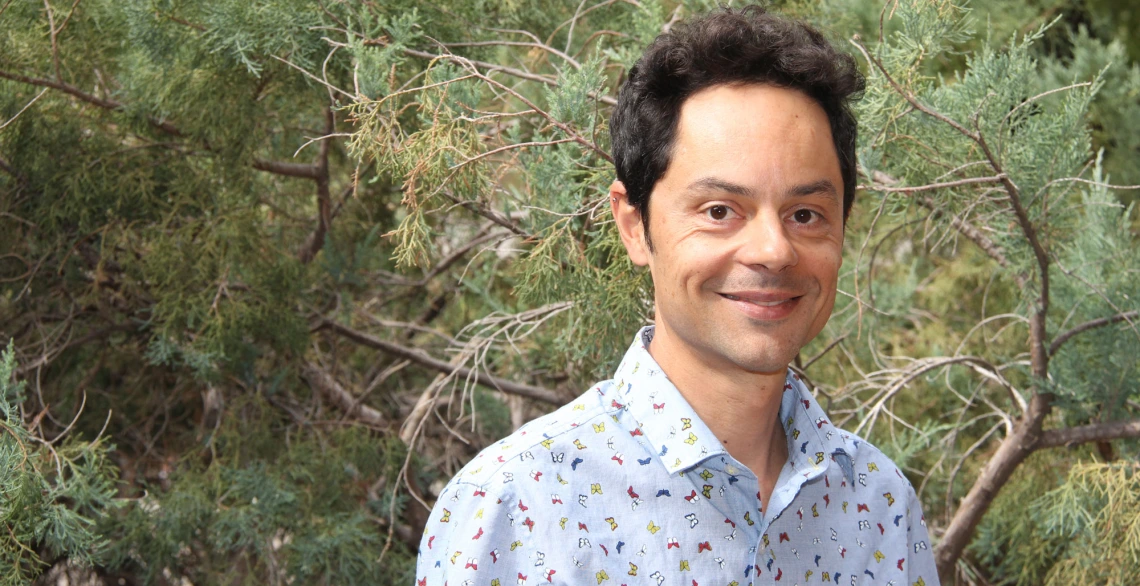College of Engineering Welcomes 12 New Faculty
The College of Engineering is growing: A dozen faculty were added in the 2017-2018 academic year, with more on the way next year.

Andrea Achilli of the Department of Chemical and Environmental Engineering
The College of Engineering welcomed 12 new faculty in the 2017-2018 academic year, to work on everything from providing people with clean water to helping stroke victims to keeping your internet transactions secure.
In Search of Less Water
Andrea Achilli and Kerri Hickenbottom were appointed as assistant professors in the Department of Chemical and Environmental Engineering. They both study water scarcity, and were having a hard time doing that at Humboldt State University in Arcata, California, which receives between 40 and 50 inches of rain every year. Tucson, on the other hand, gets about 12 inches a year.
“Arizona’s just a really great place to kind of do our research in because it’s so water stressed,” said Hickenbottom, whose research focuses on concentrate management and life cycle assessment.
Both Achilli and Hickenbottom said they’ve enjoyed the collaborations at the department, college and university level at UA. Achilli, who does most of his wastewater treatment and desalination research and work at the Water & Energy Sustainable Technology Center off campus, said he’s humbled to be collaborating with the great scientists and engineers at UA.
An Alumna’s Return
Rosa Maria Rojas, who joined the Mining and Geological Engineering Department as a professor of practice, graduated with a master’s degree in mining engineering from the UA in 2013.
“Ever since I was a student, I always tried to mentor other students,” she said.
Rojas first began volunteering with the Society for Mining, Metallurgy and Exploration to promote STEM careers and provide professional development for students in 2006, when she was a student herself in Peru. She became one of the leaders of the SME National Young Leaders committee in 2014. Her love of mentoring led her to realize that a professor of practice position at her alma mater might be a good fit.
“It gives you a different grasp of things, being able to share your experience in the industry,” she said. “Both in the technical side and in terms of leadership, communications and situations that you can go through in the mine.”
Family Reunion
Agustin Ochoa joined the Department of Electrical and Computer Engineering as a professor of practice. The opportunity to advance his specialized circuit-analysis approach -- driving point impedance/signal flow graphs-- is what he’s second most excited about being in Tucson. Living in the same city as his extended family -- including his mother, siblings and three kids -- is first.
“With me working here, we bought a second home here and we all spent Christmas week in our Tucson home,” he said.
Quantum Communications
Zheshen Zhang, a new assistant professor in the Department of Materials Science and Engineering, is looking forward to advancing his work in the field of quantum information science.
His research into entangled photons, which are particles that remain hypercorrelated even when separated by great distances (so a person can, say, give particle A a little poke in Tucson and have the same effect on particle B in Phoenix) has applications everywhere from biomedical engineering -- by using entangled photons to take precise looks at biological samples, to internet security -- by allowing more sophisticated data encryption.
“It’s a very supportive environment,” he said of UA. “It has been really a pleasure to work here.”
He’s also enjoyed teaching undergraduate classes, and has been impressed by his students, especially when he assigned them a final project that his friends at MIT -- where Zhang did his postdoc and worked as a research scientist -- thought was thoroughly challenging.
“Some of them came up with really innovative ideas for final projects that I had not even thought about,” he said. “I find that the students here are really smart.”
Biomedical Innovations
Kaveh Laksari started as an assistant professor in the Biomedical Engineering Department. His research focuses primarily on brain injury and cardiovascular biomechanics. He’s working on a high-performing computing model to provide real-time results for how much blood is in each region of a person’s brain after a stroke.
His impressions of the UA as an excellent school were reinforced when he did his interview here, and haven’t changed since, he said.
“UA is good. There’s a lot of people who do good work and are very helpful and friendly,” he said. “I like the atmosphere and the environment here.”
This semester also saw the addition of Matthias Poloczek and Changxu Wu to the Department of Systems and Industrial Engineering, Jekan Thangavelautham to the Department of Aerospace and Mechanical Engineering and DongKyun “DK” Kang to the Department of Biomedical Engineering.
Nima Toosizadeh of the College of Medicine and Tsu-Te “Judy” Su of the College of Optical Sciences both received joint appointments to the Department of Biomedical Engineering.
Su, whose work involves using optical instruments to study biology at cellular and molecular levels, says the university’s world-class biomedical engineering and optics programs allow her to develop and apply advanced optics technology to some of biomedical engineering’s biggest problems.
Not to mention, adds the former LA resident, “I can always find a parking spot.”

